Read the full article as it takes you through the most important things to remember before you swim in Lake Como.
Swim In Lake Como
Lake Como stretching 47 km, is a lake in Lombardy, the North Italian area. It throws up a question to every tourist that it hosts. Is Lake Como ideal for swimming? The answer here is neither a concrete yes nor a definitive no but rather an explanatory ‘depends.’ Depending upon the seasons, temperature, time of the day, and most importantly, the place.
Although the waters of some of Lake Como’s pebble beaches are among the most swimmable in the world, should you go in? Even though the waters are swimmable, a small minority also believe that it isn’t the “optimal” location for several reasons. One is that it’s a lake, a body of water with deep parts. The other is the Lake’s extensive moss growth and gloomy elements, which can be considered distasteful. However, if you want to swim there, rest assured that these Italian waters invite hundreds of tourists annually. 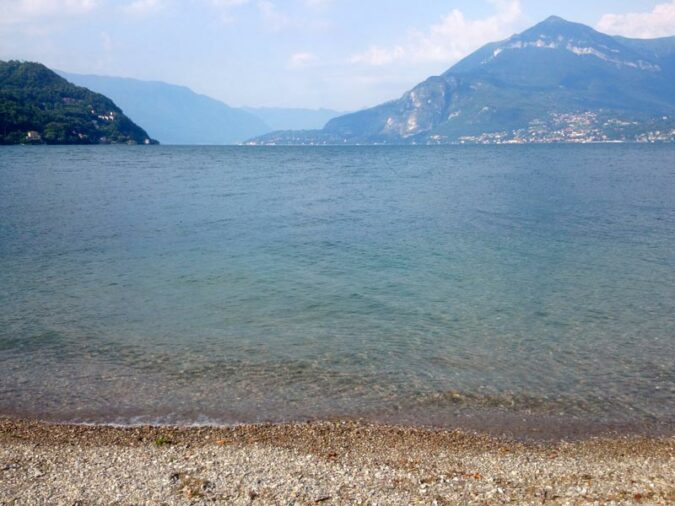 Read More: How Safe Is Florida for Travel?
Read More: How Safe Is Florida for Travel?
The safety of Lake Como is closely tied to the earlier question of ‘Is Lake Como dirty?’ as the only safety concern it poses now is pollution. Back in 2014, it was reported that pollution was often observed in the southern areas of the Lake, closer to the city of Como. In contrast, northern parts of the Lake, bordering towns like Domaso and Gravedona, are some of the cleanest areas to dip yourself in: due to the constant stream of fresh water from River Adda.
Best time to swim in Lake Como
The water in Lake Como is chilling, to say the least, as it is located at the base of Alpine. Hence, when the water’s cold, the best time to swim in it is the entirety of summers and the periphery of winters. In winter, the average minimum temperature of the Lake is 3 degrees Celsius.
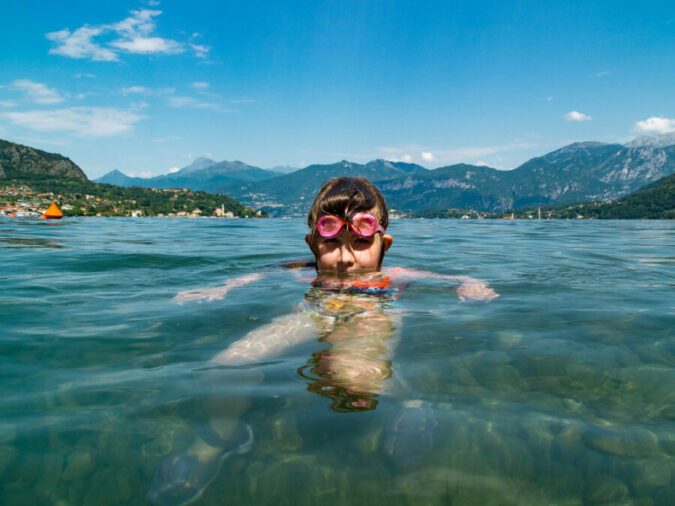
The best time to enjoy Lake Como’s waters is from March to November. Large crowds swarm the beaches near Lake Como in the months of July and August. The seasons are regarded as the finest for swimming. As people seek refuge from the heat, privacy is nearly nonexistent on the beaches. This does not preclude you from taking in the mood, however.
Read More: How Safe is California for Travel?
Lake Como in Winters
You can start your unforgettable trip with local delicacies instead of swimming, such as Pizzoccheri, Risotto Alla, Scott, Pesce Persico, and Milanese. Suppose you’re a serious skier or snowboarder. In that case, locations like Bormio, Lecco, Livigno, Madesimo, Piani Di Bobbio, Livigno, and the Alps of Engadin may keep you busy for the entire day, and you can quickly get to these locations from Lake Como town.
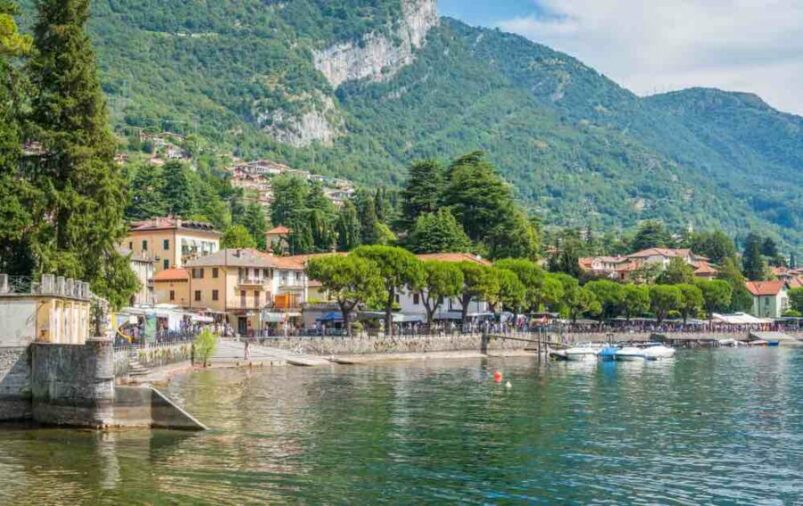
In the winter, more aesthetically inclined tourists can take advantage of the less crowded Lake Como to interact with locals, reserve restaurants without worrying about a seat being available, stay in spa hotels, and enjoy the Lake Como lights, which are very stunning.
Read More: Can You Swim In Lake Michigan | Full Guide
Pollution in Lake Como
Indeed, many approaches can be used to understand the pollution in Lake Como; in the past, none of these activities were mandated on the Lake, but Goletta Dei Laghi is currently taking active measurements of the bacteria and microplastic concentrations in the Lake. As of 2021, 2019, and 2018, Lake Como is considered safe to dip into.
For reference, Lake Como had counted an average of 28,500 microplastic particles per cubic kilometer. However, on some parts of lake Como – between Dervio of Lecco and San Siro on the Como side counted up to 500,000 particles per cubic kilometer.
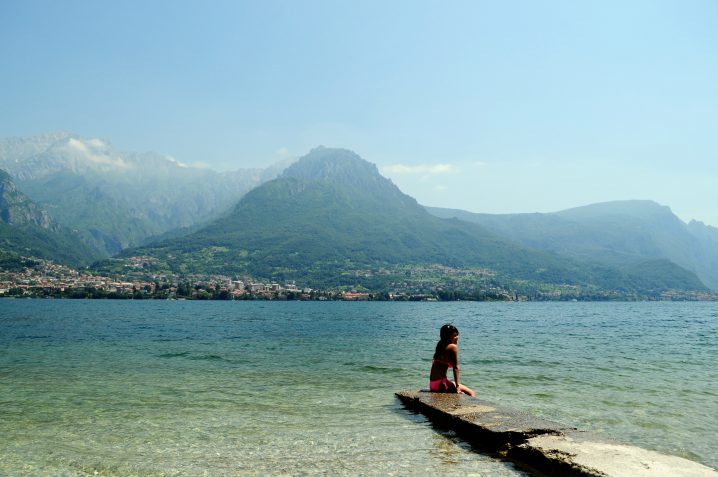
The Italian Ministry of the Environment launched the “Plastic Free Challenge” campaign in 2018 to promote awareness after observing the growing concern regarding plastic in the Lake, and Como has successfully implemented it. For instance, Lido in Faggeto Lario and the local bars can function without single-use plastic (IMO, banning single-use plastic should give higher priority than banning multi-use plastic for significant impact)
Read More: Can You Swim In The Dead Sea
DDT, a pesticide, and PCBs were formerly a significant issue for Lake Como (used in electronic devices). Both substances are considered dangerous compounds, long-lasting, and build up in the food chain. The study was designed to examine the PCB and DDT concentrations in the areas where samples and cores were taken in 2009. The researchers use the roots to create a timeline for Lake Como’s last 20–25 years. It was discovered that the PCB levels in the core samples gradually decreased from 1970 to 2009, a decline of 200 nanograms per gram of dry sediment. 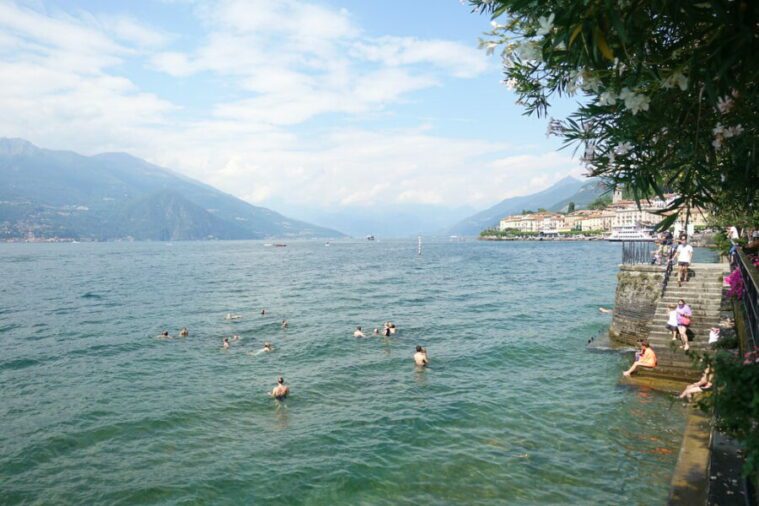
Safe Places to Swim in Lake Como
Common sense is the essential requirement for swimming in Lake Como safely. People should take their time getting into the water, especially after spending some time sunbathing, and avoid swimming right after eating. The majority of beaches are club-managed and tend to be posh and fashionable. If the rich environment is not what you’re after, you can still get free access to beaches.
-
Argegno
Argegno is near the town’s tiny harbor. Argegno is a grassy beach that’s great for gatherings with friends and family.
-
Bellagio
There are two places in Bellagio where swimming is permitted. San Giovanni and the Libe. A beautiful beach that’s great for tanning is The Libe. San Giovanni features a pebble shore and is open to the public.
-
Domaso
Domaso is a section of the Lake that has two divisions. One is a free area and the other an area managed by clubs. The beach is relatively small but very comfortable for swimming.
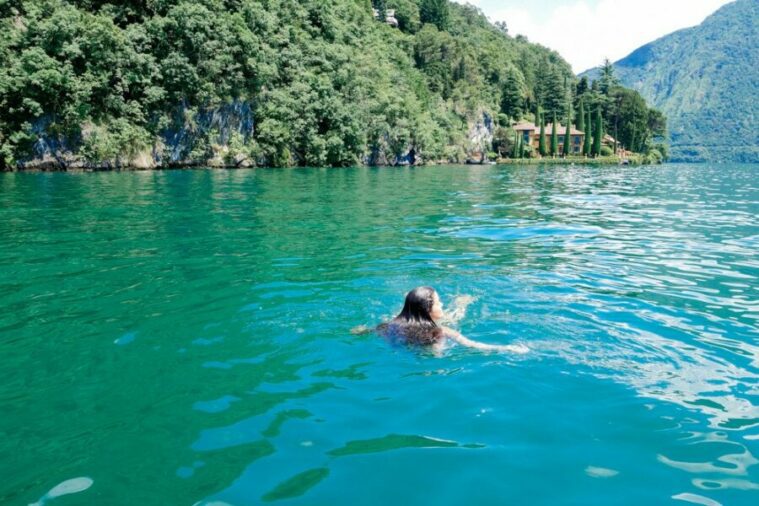 Read More: Can You Swim in Miami in December? (Complete Guide)
Read More: Can You Swim in Miami in December? (Complete Guide)
Things To Look Out For In and Around Lake Como
Sharks are pretty abundant in the Mediterranean waters. You can rest confident that there are no sharks in Lake Como’s waters. Large fish species in the Lake include Northern Pikes and Zander. Except for a few nibbles on your toes, these fish are entirely harmless. Smaller fish species in the Lake include Brown Trout, Burbot, and European Perch.
It frequently rains on Lake Como, and heavy rain and flooding are possible. Landslides caused by these events forced the evacuation of certain settlements near the Lake’s shore.
Interesting Facts about Lake Como
The water in Lake Como serves as a thermal reserve by absorbing heat from the sun in the summer and releasing it in the winter. Lake Como is the most well-known Lake in Italy. Due to the Lake’s proximity to Milan and Lugano, access to it is simple. It has a lot of club-run spaces. They are all visited by visitors, which may explain why admission is so pricey. 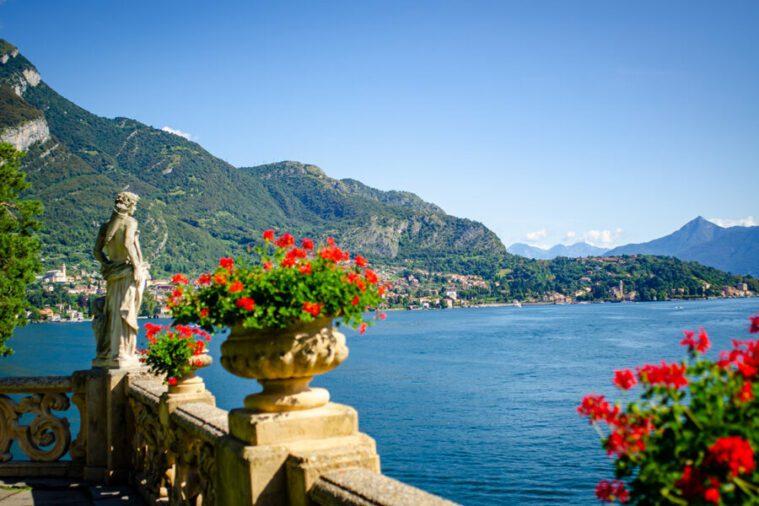 The local government conducts routine water quality checks, and other than microplastic, the Lake is well within the safe bacterial levels. With 28,500 particles per kilometer, the 2018 data ranked Lake Como fourth on the list.
The local government conducts routine water quality checks, and other than microplastic, the Lake is well within the safe bacterial levels. With 28,500 particles per kilometer, the 2018 data ranked Lake Como fourth on the list.
Read More: Road trip from Denver to Grand Canyon
Conclusion
Lake Como is one of the most loved destinations in Italy. The number of tourists who swarm to the coastlines and waters every year to engage in swimming and other water sports is proof of this. It’s not ideal, but it’s still one of the most excellent places to go swimming. 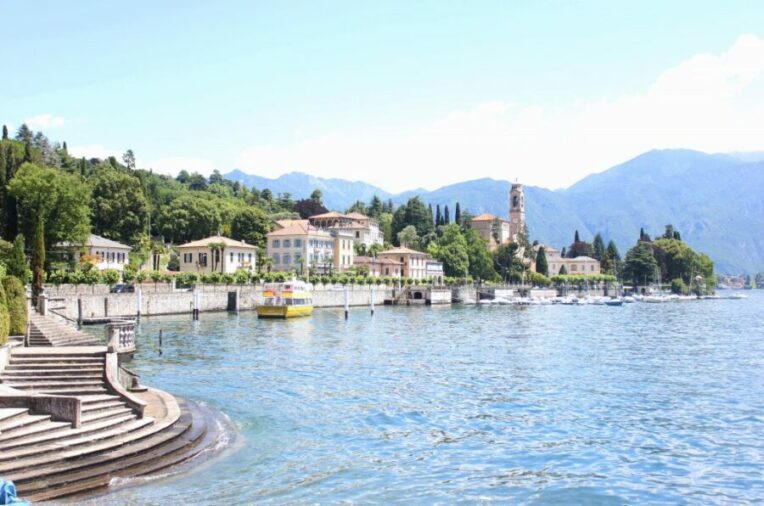 There are several beaches along the Latin inverted Y-shaped waters, which individuals can access for free or by joining one of the clubs. Through the implementation of programs to reduce the quantities of plastic, the Italian government is protecting the Lake. Microplastics used in headphones and cosmetics is prohibited nationwide. In the nearby bars surrounding Lake Como, biodegradable pasta straws have taken the place of plastic straws.
There are several beaches along the Latin inverted Y-shaped waters, which individuals can access for free or by joining one of the clubs. Through the implementation of programs to reduce the quantities of plastic, the Italian government is protecting the Lake. Microplastics used in headphones and cosmetics is prohibited nationwide. In the nearby bars surrounding Lake Como, biodegradable pasta straws have taken the place of plastic straws.
Summing it all up in the end, Lake Como, despite its challenges, continues to be a tourist hotspot due to its incredible scenic beauty and mouthwatering delicacies.
Table of Contents





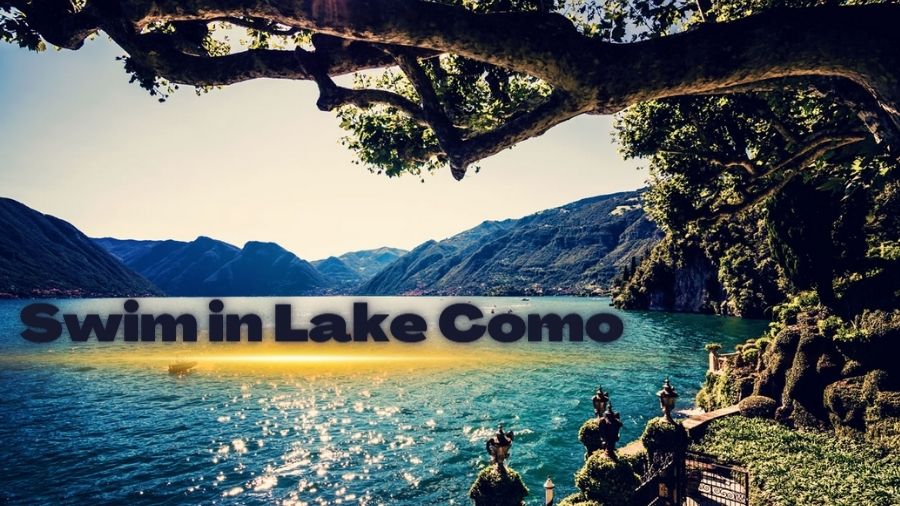

Add Comment